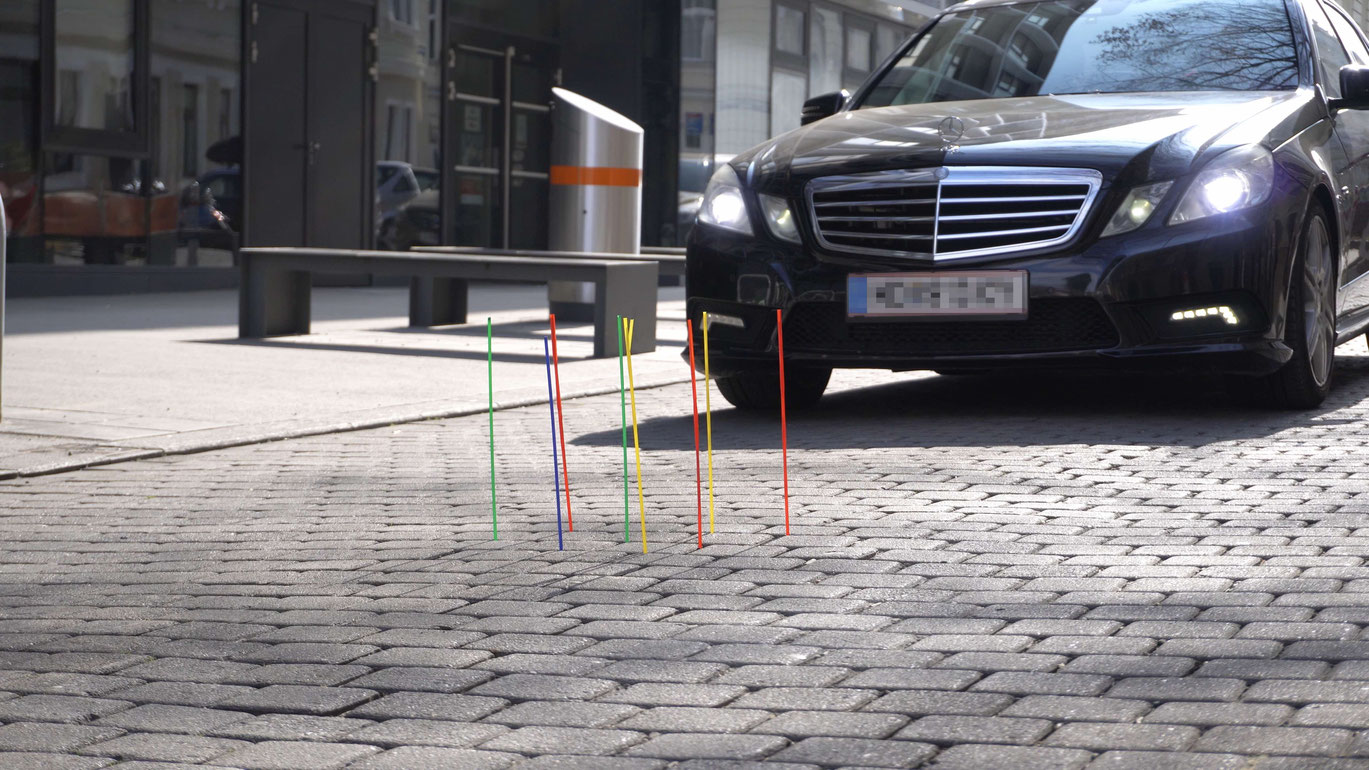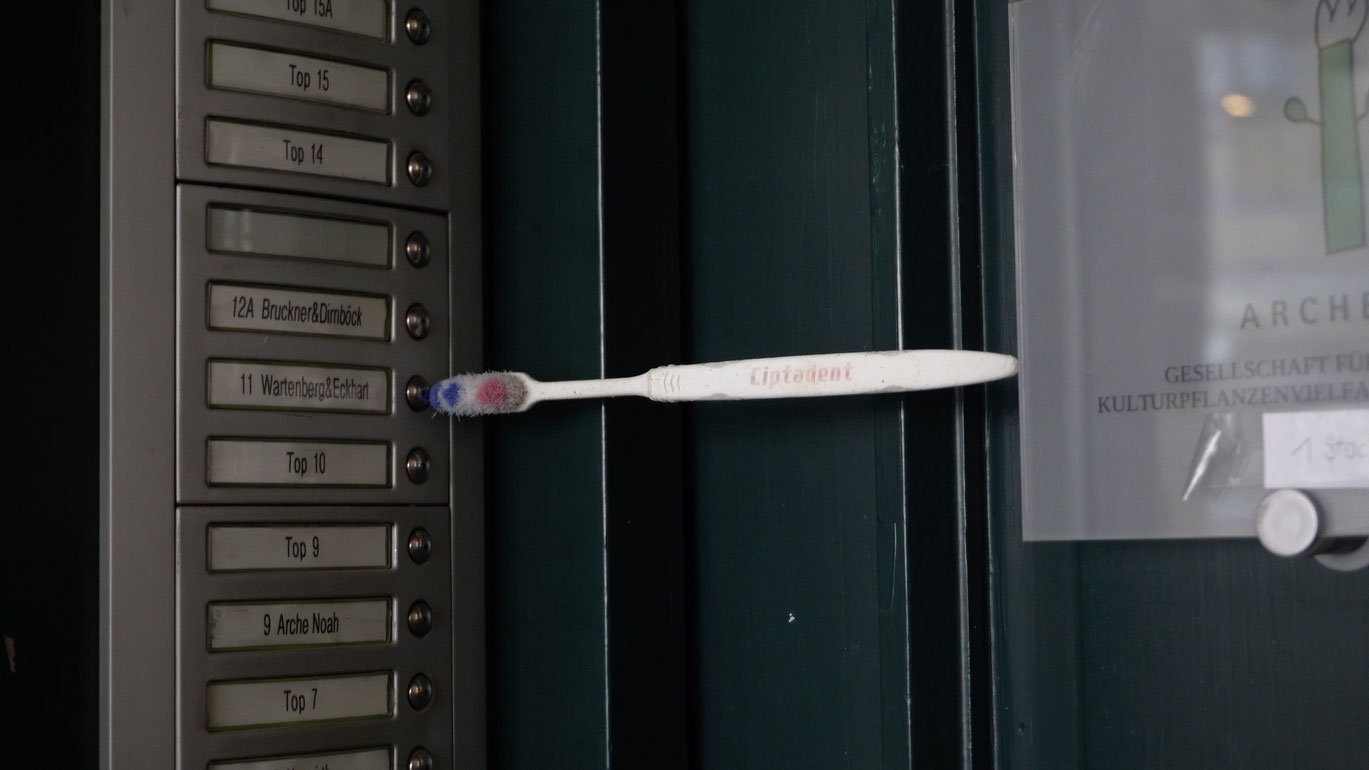Afterlives
The sound of the sea, waves – and a yellow plastic stick floating in them. An image that now seems like an allegorical commonplace of the Anthropocene forms the prelude to Michael Heindl’s Afterlives. It is about the afterlife of all sorts of plastic objects that, when withdrawn from the consumption process, often travel long distances before finally ending up in the sea. In this case, the director has collected the remains of rubbish washed up on the coast of Tanzania, mostly high-quality and still intact plastic, in order to take them back to their fictitious places of origin. In Afterlives, these are partly inconspicuous, partly cleverly prepared everyday contexts in the urban space of Vienna, which here stands pars pro toto for the West’s wasteful, throwaway society.
With pointed interventions, Heindl exposes their functionality by feeding selected plastic parts into the supposedly smooth processes of public life. A sandy tennis ball blocks a subway door, a piece of hose on a fountain causes water to run all over the square in front of it, a sandal placed in a rotating company sign produces a disruptive squeak. All of these interventions, which Afterlives assembles in a frictional staccato, mark an inventive retrieval of the superfluous and useless. These small everyday dadaistic acts meanwhile give expression to a return of what was once produced with a great deal of energy, subsequently consumed largely thoughtlessly, and later carelessly thrown away. It’s as though an awareness of the fundamental imbalance of our (disposable) economic system could only be brought about by creative irritations in the thoroughly familiar. Even if the mountains of waste can no longer be brought under control in reality, it is crucial, as Afterlives shrewdly explains, to make a new start on the mental and imaginative level. (Christian Höller)
Translation: John Wojtowicz
Afterlives
2022
Austria, Tanzania
3 min 25 sec



